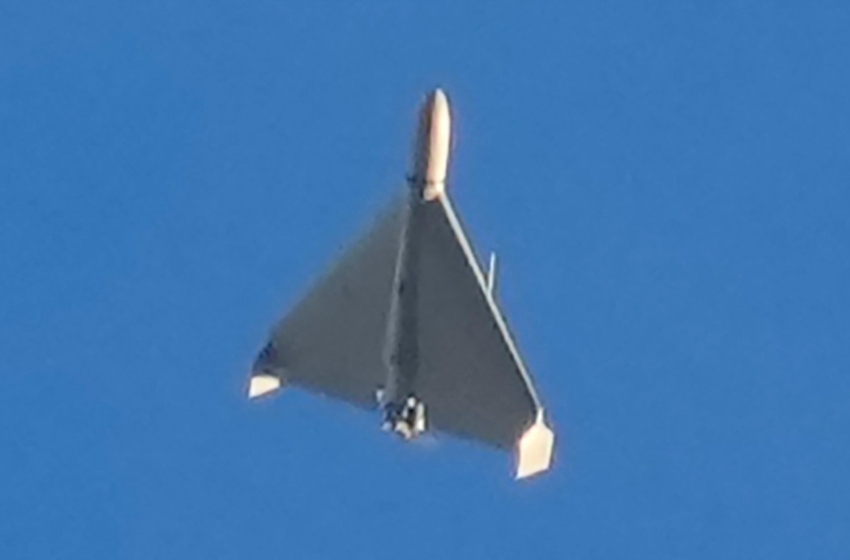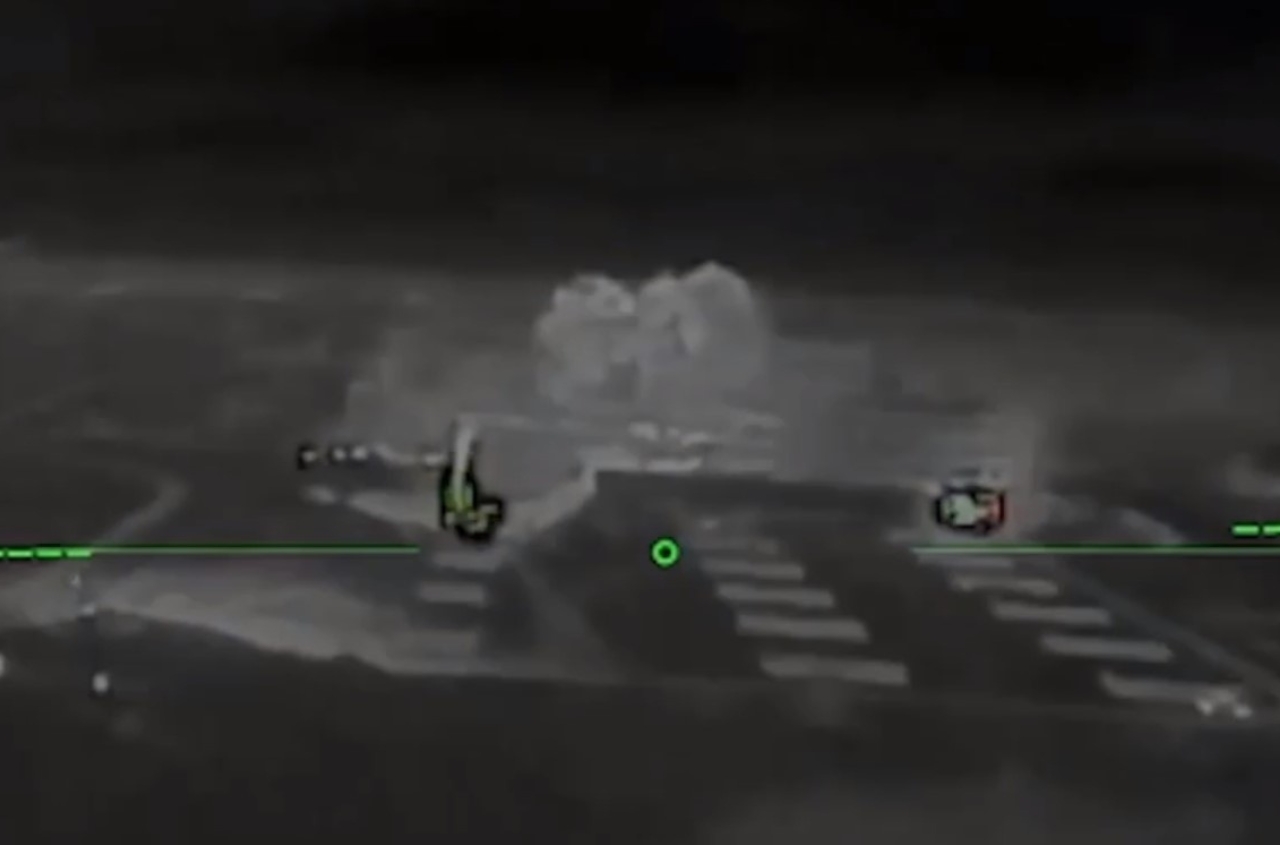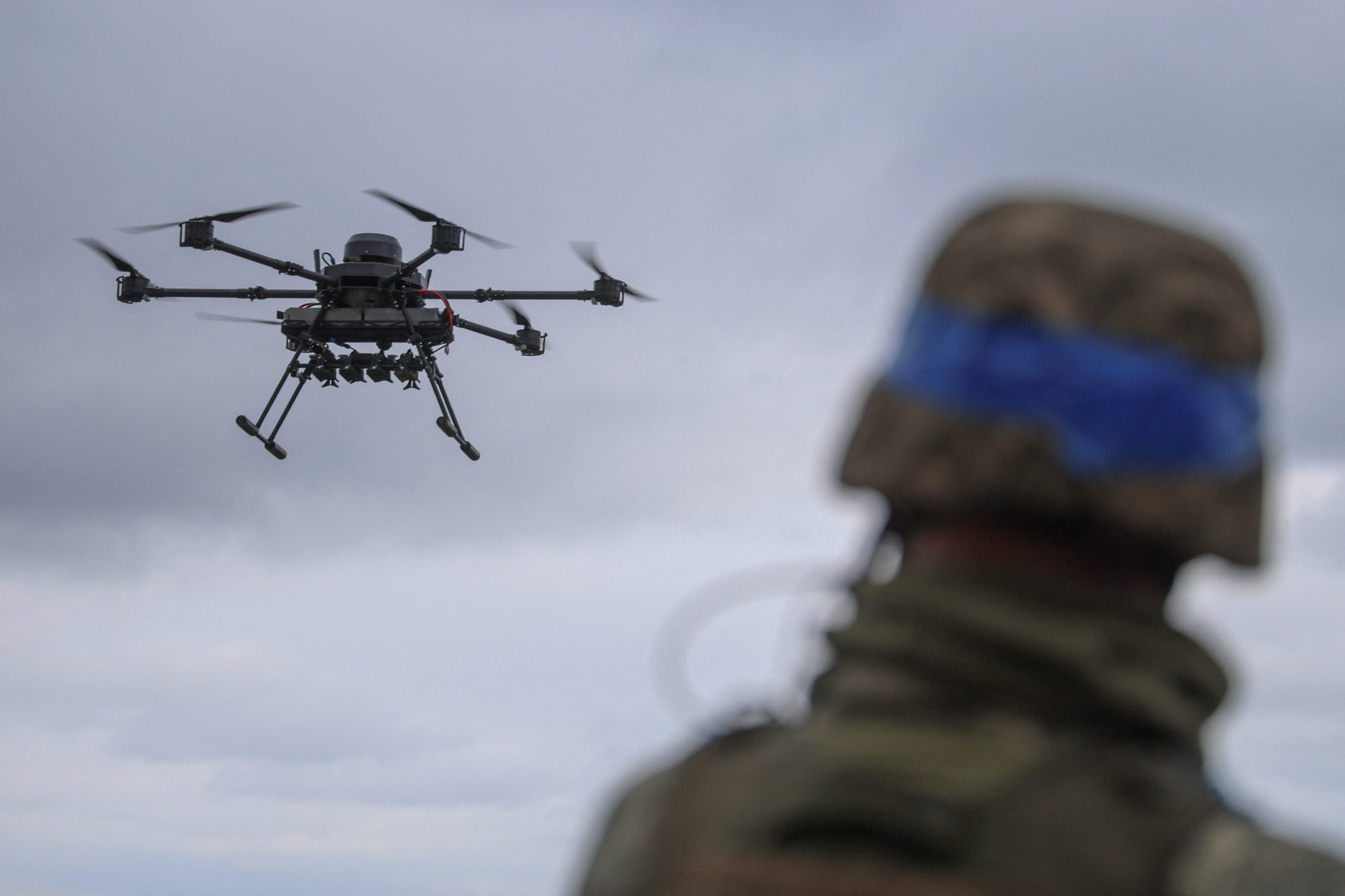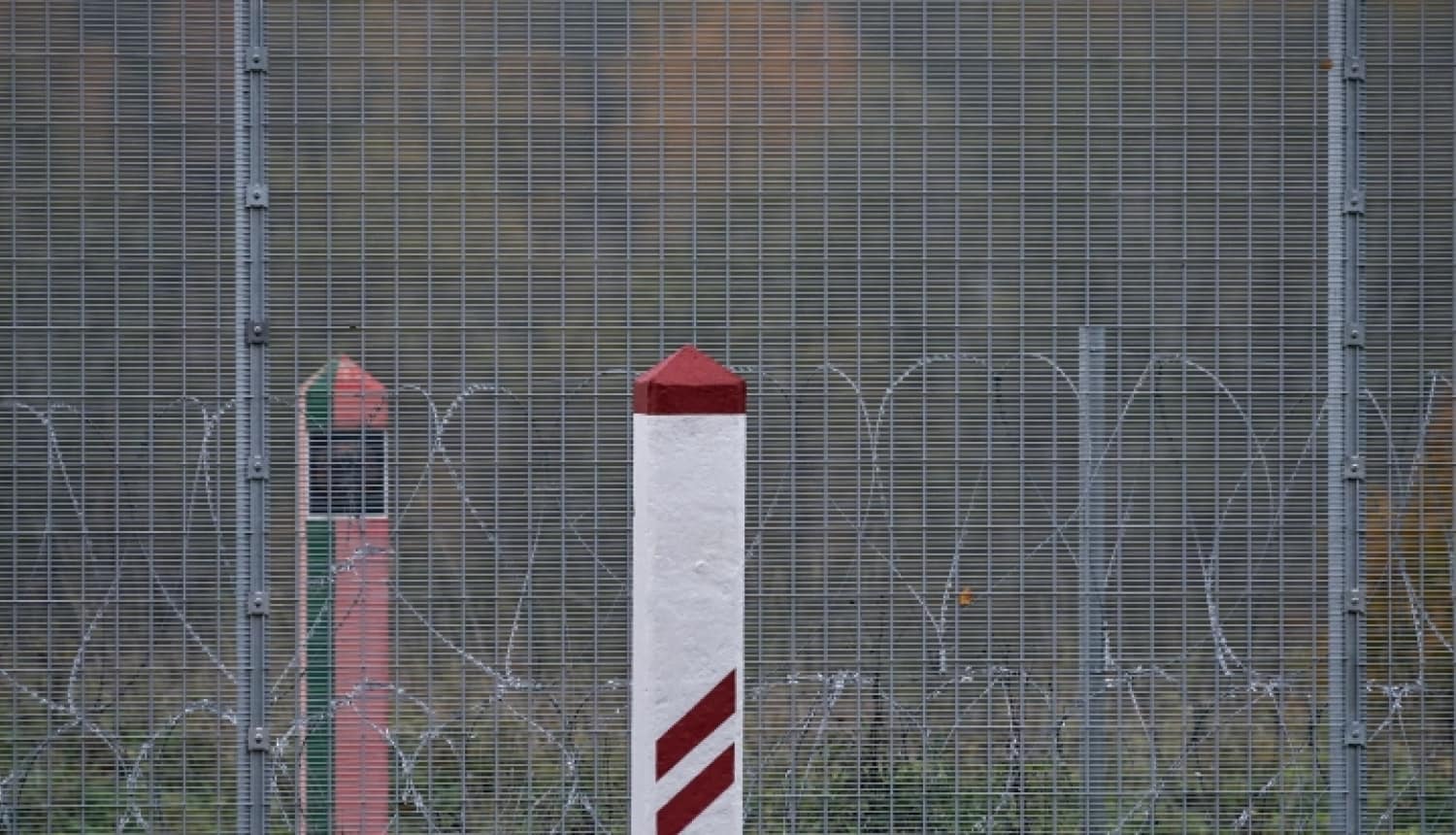By Alexander Kovalenko for OBOZ
Recently, there has been a consistent change in the tactics used by Russian occupiers in deploying Shahed-136 kamikaze drones as a tool of terror. It is therefore important to pay attention to expanding the means of countering this threat, as mobile fire groups sometimes prove to be ineffective.
First and foremost, I would like to highlight the changes observed in the Russian Armed Forces’ efforts to increase the lethality and "invulnerability" of the Shahed-136 drones.
Starting from February–March 2025, the Russian occupation forces began using Shaheds not in the traditional lowpass format—flying at extremely low altitudes—but instead at average altitudes of 1,500 meters over mainland Ukraine and 2,000–2,500 meters from maritime directions.
At these altitudes, targets are detected by radar systems earlier than at extremely low altitudes, but this creates a dilemma: should one use missiles capable of reaching them—missiles that are in limited supply compared to the production rate of Shahed-136 drones—or take a chance?
In addition, the Russian Armed Forces changed their tactics regarding how strikes are carried out. Previously, the drones would dive from 1.5–2.5 km altitudes at speeds of around 90 m/s. Now, they tend to descend to 1 km altitude, stabilize the airframe, and then initiate a dive. This is because accuracy from 2.5 km (and even 1.5 km) is significantly reduced, while at 1 km altitude the deviation is within acceptable limits for the Russians.
This stabilization phase is short, but during it, mobile groups equipped with weapons such as DShK or Browning M2 are unable to successfully engage the kamikaze drone. Even having man-portable air-defense systems (MANPADS) does not provide a reliable solution under such tactics.
It’s worth remembering that an effective counter to these terror tools could be a layered short-range air defense (SHORAD) system—SAMs, SPAAGs, including self-propelled anti-aircraft guns and electronic warfare (EW) systems, as well as certain means that are often talked about but for which no formal requests have been made. Let’s break this down.
Surface-to-air missile systems
Our partners have more than enough tools to shoot down Russian kamikaze drones either before they reach their targets or in situations where other countermeasures cannot be applied.
Not only the now-iconic anti-drone Gepard SPAAGs and similar systems, but also legacy systems like the ZSU-23-4 Shilka, ZU-23-2, and 2S6 Tunguska can be very useful. When it comes to short-range SAMs, this includes upgraded Soviet systems like the S-125, Strela-10, and Osa, as well as Western counterparts such as the Crotale, Alvis Stormer, and L3Harris VAMPIRE.
However, there is an abundance of other SHORAD-level systems worldwide, but little is known about whether Ukraine has requested them or whether they’ve been supplied.
For instance, Ukraine received Skyguard/Aspide short-range SAMs with a range of 35 km, altitude coverage of 4 km, and missile speed of Mach 4. These are highly effective against cruise missiles. Against kamikaze drones? Yes, the kill probability is high, but the missile cost is another matter… The price-performance ratio and quantity also matter greatly.
It must be understood that using an expensive missile to destroy a Shahed-136 drone is justifiable only when there is no other option, and the consequences of a successful strike by the drone could be catastrophic.
The same applies to the MIM-23 HAWK SHORAD system. Again, the issue lies in the balance between the number of missiles used and the drone production rate.
Another interesting system is the German LeFlaSys/ASRAD SHORAD, which would be very helpful in critical interception scenarios. However, there is no known information about such systems being transferred to Ukraine’s air defense forces during the full-scale invasion.
On the other hand, Ukraine had been working on designing its own SHORAD system based on the ASRAD platform. But that’s another story, falling into the category of “forgotten but still relevant,” which will be discussed later.
Decommissioned systems: a missed opportunity?
Another important issue is decommissioned systems. At one point, I noted that many of our partners had retired and sent for disposal numerous SHORAD systems that would have been extremely useful for Ukraine in countering Russia. For example, the Roland SAM system or the American MIM-72A/M48 Chaparral.
The Roland SAM was a joint German-French development from the 1960s, adopted in the late 1970s. The last modified versions of Roland had a missile speed of 620 m/s, a range of up to 8.5 km, and a maximum effective altitude of 6,000 meters—ideal for all current tactics used with the Shahed-136.
However, Germany claims that these SAM systems, decommissioned in 2005 but still used by the 301st anti-tank missile battalion until 2007, are completely gone.
At the time of decommissioning, Germany alone had over 180 Roland systems of various modifications. Over the decades of use, a significant stockpile of missiles had been built up.
As for the MIM-72A/M48 Chaparral, this system was adopted in 1969 and fully withdrawn from U.S. service by 1997. At that time, the U.S. Army had 600 launchers and more than 5,300 AIM-9 missiles in stock.
In terms of capabilities, the MIM-72A/M48 Chaparral could engage targets up to 8 km away and at altitudes up to 3 km. With a missile speed of Mach 1.5, it was capable of intercepting a wide range of subsonic targets—from kamikaze drones to cruise missiles.
Hundreds of MIM-72A/M48 Chaparral systems were produced, and not all of them were scrapped or sent to museums. In several countries, the Chaparral continues to be on active duty — for example, in Taiwan, Morocco, and Egypt. In Israel, they were decommissioned in 2003, in Portugal in 2018, and in Chile in 2024. So, to say that all systems have been disposed of is, to put it mildly, inaccurate. But…
Strangely enough, a number of short-range air defense systems are simply not being supplied to Ukraine. Which raises the question: is the problem that these systems truly no longer exist after being scrapped, or is it something else?
We’ll talk about that strange “or” a bit later. For now, let’s move on to another category important for Ukraine’s defense against kamikaze drones — especially considering that shooting down Shahed-136s must have a rational, economical justification: the cheaper, the better. That's why using missiles isn't always rational and should only be done when other means can't take down the target.
Anti-aircraft guns and self-propelled AA systems
Anti-aircraft guns and self-propelled AA systems also play a very important role in countering kamikaze drones.
The most well-known among them are the aforementioned Gepard SPAAGs, the ZSU-23-4 “Shilka,” and the ZU-23-2. But there are others as well — for example, the excellent Oerlikon 35mm L/90 GDF-007 anti-aircraft gun, which is in service with many EU countries, including Greece and Spain. Another very interesting option is the 20mm twin-barreled Rheinmetall Rh-202.
And what if I told you that Greece has a unique Artemis-30 30mm anti-aircraft gun? This AA system has yet to be tested in real combat conditions — so why not try it out in Ukraine? Say, somewhere around Odesa?
Besides, there are still many Soviet-era ZSU-23-4 “Shilka” and ZU-23-2 units scattered around the world, which could be quite effectively modernized to counter kamikaze drones. And we're not just talking about countries in Africa or the Middle East — like Syria — but also EU members such as Greece.
So, given today’s threats, Ukraine would benefit most from anti-aircraft systems that can hit targets at altitudes over 2 kilometers, at the very least.
Alternative tools
Many people might think I’m about to mention hunter drones — but no. Even though that direction is actively being explored for future use, there’s no guarantee that hunter drones wouldn’t face the same challenges as mobile fire teams — especially after the Shaheds changed their flight altitude tactics. That’s why we need an alternative that will always work, regardless of the enemy’s tactics.
Everyone knows I repeatedly advocated in 2019 for Ukraine to acquire the light turboprop attack aircraft Embraer A-29 Super Tucano. Back then, I tried to explain to the public — which was obsessing over F-16 fighters — that the Super Tucano shouldn't be compared to supersonic combat jets, as their roles are completely different. For instance, training beginner pilots or carrying out police/border missions. But when it comes to countering Shahed-136s, the Super Tucano would be an ideal solution.
Or, take 2018, when Ukraine had the opportunity to participate in an auction to buy AH-1W Super Cobra attack helicopters. I still remember how I tried to draw attention to the auction held on January 24, 2018, in the state of Maryland, where these helicopters — of which the U.S. Army had a surplus (especially after the large-scale AH-1Z upgrades) — were being sold. Each helicopter at the time cost around $10 million.
I saw them as a very promising opportunity to upgrade the Ukrainian Armed Forces’ fleet, but as soon as I voiced this idea, a wave of unconstructive hate began — mainly from fans of the AH-64 Apache, which some had been obsessing over since 2014.
Then in July 2019, it was announced that the U.S. had canceled the transfer of previously ordered Bell AH-1Z Viper attack helicopters, originally made for Pakistan’s army aviation. Washington decided to cancel the sale of 12 of these helicopters. Why didn’t Ukraine take over that order? I don’t know.
Today, the Viper would be the ideal system to intercept Shahed-136s — especially considering its upgrades, such as a top speed of 411 km/h, a service ceiling of 6,000 meters, and a wide array of available armaments, including:
– 16 AGM-114 Hellfire air-to-surface missiles
– LAU-61 launchers with 70mm Hydra rockets, 19 rockets per pod
– A 20mm three-barrel M197 cannon with 750 rounds
By the way, another auction of Bell AH-1Z Vipers is set for this spring…
But the key point is that an interception system like a turboprop attack aircraft or a light attack helicopter is far more economically viable and tactically versatile than missile systems, SPAAGs, or even gun-based AA systems.
These platforms are always ready, can operate at any altitude, and intercept kamikaze drones that are far more limited in performance compared to a turboprop attack aircraft or a light helicopter.
Of course, the chances of acquiring Embraer A-29 Super Tucanos are minimal at the moment — with Brazil’s current government, the prospect of them going to Ukraine is practically zero. The same goes for the Bell AH-1Z Viper: under the current U.S. administration, Ukraine would have to claw and scrape to get access to those auctions.
Meanwhile, Europe has analogues that are no worse — and perhaps even better.
For example, Italy has the very capable Agusta A129 Mangusta modern light attack helicopters, previous-generation but effective Leonardo Helicopters, and Hughes 500s — light multipurpose helicopters produced under license.
Spain has an interesting option in the Eurocopter EC120 Colibri — a light multipurpose helicopter. Greece has the Bell OH-58 Kiowa.
Germany has the Airbus H145M LKH light attack helicopters, the multipurpose Eurocopter EC665 Tiger UHT, and the Raytheon T-6 Texan II turboprop aircraft.
So, there are options — the question is one of standardization and how willing Ukraine’s partners are to supply equipment that could be highly useful and effective in countering Russian Shahed-136 terror drones.
But amid all these appeals to partners, we must not forget: saving a drowning person often depends on the drowning person themselves. Therefore, we should revisit those Ukrainian air defense projects that were once closed and never developed — even though today they could be just as effective as their Western counterparts.
Forgotten but Relevant
In 2016, the Ukrainian company Arsenal presented a very interesting working project for an anti-aircraft fire control system. It consisted of a radar, a decimeter-range observation station with a digital antenna array, and a remote control station.
The uniqueness of this system lay in its adaptability—it could be integrated into any anti-aircraft or surface-to-air missile installation, significantly improving its tactical and technical characteristics. The 2016 presentation focused on the 57mm anti-aircraft artillery system S-60. These systems were widely available both in Ukraine and abroad, and material scarcity did not appear to be an issue.
Thanks to the modernization, the S-60 anti-aircraft system was not only equipped with radars but also upgraded with electric gun drives, turning it into a remotely controlled weapon capable of hitting aerial targets at distances of up to 6 km and altitudes of up to 5 km, with a firing rate of 70–80 to 100–120 rounds per minute.
However, this project never progressed further, though if today 3–4 batteries of such systems were guarding Dnipro, Kharkiv, Odesa, Zaporizhzhia, and many other cities, the scale of Russian terror would be much smaller. But let’s move on.
That same year, 2016, the Yuzhnoye Design Bureau presented a project for a mobile anti-aircraft system based on the Ukrainian BTR-4—a mobile complex for countering tactical UAVs (MKP UAV). It was armed with a 35mm Oerlikon artillery system from Rheinmetall Air Defence. However, in 2019 the project was shut down for a rather mundane reason. But before we get to that, another project is worth mentioning.
In 2011, the Ukrainian company Arsenal, in cooperation with Rheinmetall Air Defence, took part in the development of the short-range ASGLA air defense system on a BTR-80 chassis. It was armed with the 9K38 missile (also known as the Igla MANPADS), but integrated with systems from the German ASRAD-2 air defense system. Specifically, it used the X-Tar 3D three-coordinate target detection and tracking radar. This project, too, was closed in 2019, despite having great potential.
So, what was the reason? The government of Angela Merkel imposed a ban on Rheinmetall Air Defence's cooperation with Ukrainian companies in the framework of these and other developments. What was the motivation behind this? Was it Merkel's unwillingness to provoke Putin by providing Ukraine with technological assistance? Possibly. But the result was that Ukraine lost access to promising short-range air defense systems.
After the German government's block on cooperation, in 2019 Ukraine’s domestic defense industry tried to implement similar projects on its own. One of these was the "Okhotnyk" ("Hunter") system by Arsenal.
The "Hunter" was installed on the chassis of BTR-80, BTR-3E, BTR-4, the Novator armored vehicle, the Kozak armored personnel carrier, and others. Its combat module was the dual "Duet" system with Igla-1V1 MANPADS, which had 30% better performance than previous versions and was adapted to bypass infrared decoys.
Furthermore, the Igla-1V1 MANPADS was essentially a precursor to the future "Kolibri" system—a fully directional MANPADS operating in the mid-wave IR range. It could engage targets from the front hemisphere at distances beyond 5 km, track at over 12 degrees per second, detect targets within a 40-degree sector, and effectively shoot down aerial objects at altitudes above 3 km. However, little is known about the further fate of this project.
Conclusions
In the current fight against Russian terror, it is crucial not to focus solely on high-profile names like the Patriot, SAMP/T, IRIS-T, and NASAMS systems. We must also remember and develop other air defense tools that are vital for securing our airspace and building a balanced, interchangeable defense system—one that is difficult or even impossible to breach through a simple change in attack tactics.
At the same time, as a recent video from Belgium—taken by "stalkers" who infiltrated a military equipment warehouse—has shown, claims that certain weapons stocks are depleted in one country or another do not always reflect reality.
Ukraine must not only diversify its air defense requests—both classic and alternative—but also continue to develop its own systems. There have been many promising projects, including those using Western technologies, which are now more accessible than ever before.
Lost time and missed opportunities must become a bitter lesson for the future—so that this mistake is never repeated, and Russian terror is never allowed to resurface.




















